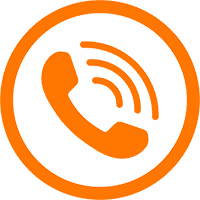The demand for food delivery services has grown a lot in recent years. Zomato has become a top name in this field. People now use their phones to look at menus, order food, and track their orders. This makes creating a successful food delivery app a great opportunity.
This guide will show you how to make a food delivery app like Zomato. We’ll talk about important features, how to develop it, and strategies for success in the market. By the end, you’ll know how to make an app that can stand up to the big names in the industry.
Table of Contents
Key Takeaways
- Understand the importance of food delivery apps in the digital age
- Identify key features to consider for a successful food delivery app
- Conduct market research and competitor analysis to differentiate your app
- Choose the right tech stack and development approach for your food delivery app
- Design a user-friendly interface that enhances the customer experience
Introduction to Food Delivery App Development
Food delivery apps are now key for both businesses and customers. They offer convenience and change how we get our favorite meals. Knowing how these apps work and what makes them successful is vital for those wanting to create a top app.
Importance of Food Delivery Apps in the Digital Age
Food delivery apps grew because more people shop online, want convenience, and prefer contactless services during the pandemic. Food delivery apps are now a big part of our lives. They let us order food easily from anywhere.
These apps also help restaurants a lot. They let them reach more customers, get noticed more, and find new customers. Plus, they give businesses useful data on what customers like and order often. This helps them make better choices and run better.
Key Features to Consider for a Successful Food Delivery App
To make a great food delivery app, you need to know what users want and what’s new in the industry. Important features include:
- An easy-to-use interface for placing orders
- Real-time updates on orders and deliveries
- Secure payment options for easy transactions
- Custom options to match what users like
- Loyalty programs and deals to keep users coming back
- Good order and delivery management for efficiency
Adding these key features helps make a successful food delivery app. It meets user needs and gives businesses an edge in the competitive market.
“The future of food is digital, and food delivery apps are at the forefront of this transformation. Building a successful food delivery app requires a deep understanding of user needs and industry trends.”
Conducting Market Research and Competitor Analysis
In the fast-changing food delivery app market, it’s key to do deep market research and look at your competitors. Knowing who your audience is, who the big players are, and what they’re good and bad at helps you make your app stand out.
First, dive into the food delivery app market to learn what customers like, what’s trending, and where the opportunities are. Look at who your users are, how they behave, and what groups they belong to. This will help you make your app fit what they need and want.
Then, do a competitor analysis to see who you’re up against in the food delivery app world. Check out their features, what users say, how they price things, and their marketing moves. See what they’re good at, what they struggle with, and what makes them special. This will help you make your app unique and give you an edge in the market.
| Competitor | Key Features | Pricing Model | Strengths | Weaknesses |
|---|---|---|---|---|
| Uber Eats |
|
|
|
|
| Grubhub |
|
|
|
|
By doing deep food delivery app market research and looking at your competitors, you can really understand the market. This helps you make a plan to create a successful and unique food delivery app.
Choosing the Right Tech Stack and Development Approach
Choosing the right tech stack and development approach is key when making a food delivery app. Developers need to think about the pros and cons of native and cross-platform development. This ensures the app meets user needs and offers a smooth experience.
Native vs. Cross-Platform Development
Native app development means making separate apps for iOS and Android. It uses their languages and frameworks. This method gives the best performance and user experience, plus access to device features. But, it takes more time and resources since two codebases need upkeep.
On the flip side, cross-platform development uses tools like React Native, Flutter, or Xamarin. It makes one code work on many platforms. This is quicker, cheaper, and easier to keep up, but might lose some platform-specific features and speed.
Popular Tech Stacks for Food Delivery Apps
The food delivery app tech stack combines front-end, back-end, and database tech. Popular choices include:
- Front-end: React, Angular, Vue.js
- Back-end: Node.js, Python (Django or Flask), Ruby on Rails
- Database: MongoDB, PostgreSQL, MySQL
- Mobile Development: React Native, Flutter, Xamarin
Each food delivery app development technology has its own strengths and downsides. The choice depends on the app’s needs, the team’s skills, and the project’s future goals.
“The right tech stack can make or break the success of a food delivery app. Carefully evaluating the options and aligning them with your business objectives is crucial.”
Understanding the native vs cross-platform development debate helps developers pick the best tech stack for their food delivery app. This choice is key for long-term success.
Designing a User-Friendly Interface
In today’s digital world, a food delivery app’s success depends on giving users a smooth and fun experience. Making the app look good and easy to use is key to keeping customers happy. By using top design tips, you can make an app that makes ordering food easy, from looking at menus to tracking your order.
Best Practices for UI/UX Design
Creating a great food delivery app interface means paying attention to details and knowing what users want. Here are some tips to keep in mind:
- Intuitive navigation: Make sure your app is easy to navigate with clear buttons and menus.
- Responsive design: Make sure your app works well on phones and tablets, looking good on all screen sizes.
- Visually appealing aesthetics: Use a clean design with great images, bright colors, and clear fonts to grab attention.
- Personalized user experience: Use user data to make the app more personal and efficient for each user.
- Seamless ordering flow: Make ordering food quick and easy, cutting down on steps and frustration.
- Real-time order tracking: Keep customers updated on their orders, including delivery times and where their food is.
By following these tips for designing your food delivery app, you can make it easy and fun for users. This will make your app stand out in the crowded food delivery market.
Integrating Essential Features for a Food Delivery App
Building a successful food delivery app requires the right features. These include restaurant listings, menu management, order tracking, and delivery logistics. Each feature is key to a smooth experience for restaurants and customers.
Restaurant Listing and Menu Management
A detailed restaurant listing is vital for a food delivery app. Users should easily find a variety of restaurants, see their menus, and choose what to order. Restaurants can update their menus with ease, keeping customers informed.
Order Tracking and Delivery Logistics
Real-time order tracking is essential. Customers should watch their orders from start to finish. Strong delivery logistics ensure orders are handled well and arrive on time, making the experience better.
For a top food delivery app, focus on essential features food delivery app, like restaurant listing food delivery app and order tracking food delivery app. These features help meet the needs of restaurants and customers, leading to happy customers and success for your business.
“A food delivery app must be designed to seamlessly connect restaurants, drivers, and customers, ensuring a delightful experience for all.”
How to Build a Food Delivery App Like Zomato
To make a food delivery app like Zomato, you need to understand its business model and key features. Zomato is a top name in online food delivery. Copying its success can help new entrepreneurs a lot.
Understanding Zomato’s Business Model and Features
Zomato connects restaurants with hungry customers. It lists local eateries, letting users check menus, read reviews, and order for delivery or pickup. The app makes money from ads, delivery fees, and restaurant subscriptions.
Key features that made Zomato successful include:
- Extensive restaurant database with detailed profiles and menus
- Intuitive search and filtering options for users to find their desired cuisine and restaurants
- Real-time order tracking and delivery status updates
- Integrated payment processing and cashless transactions
- User-generated reviews and ratings to help customers make informed decisions
- Personalized recommendations and AI-powered suggestions
By adding these features to your build food delivery app like zomato, you can offer great value to restaurants and customers. This will increase user engagement and revenue.
| Feature | Description |
|---|---|
| Restaurant Listings | Comprehensive database of local restaurants with detailed profiles, menus, and user reviews |
| Search and Filtering | Intuitive search functionality and advanced filters to help users find their desired cuisine and restaurants |
| Order Tracking | Real-time updates on order status and delivery progress to provide a seamless user experience |
| Payments | Integrated payment processing to enable cashless transactions and a convenient checkout process |
| User Reviews | User-generated reviews and ratings to help customers make informed decisions about restaurants |
| Personalization | AI-powered recommendations and personalized suggestions to enhance user engagement |
Looking at Zomato’s business model and features gives you insights for your food delivery app development. This can help you make a platform that appeals to both restaurants and customers.
Implementing Secure Payment Gateways
For a successful food delivery app, making sure payments are secure and easy is key. Using secure payment gateways builds trust with customers and makes checking out smooth. By adding strong payment integration to your food delivery app, you protect financial info, lower fraud risk, and offer many payment choices for users.
Stripe is a top choice for food delivery apps. It has many payment tools, checks for fraud, and gives detailed reports. PayPal is also popular for its secure and known payment experience, with strong security steps.
When adding secure payment gateways to your food delivery app, follow these key steps:
- Make sure you meet payment card industry (PCI) standards
- Use end-to-end encryption to protect data
- Give users many payment choices, like cards, digital wallets, and mobile payments
- Be clear about payment policies and security steps
- Keep updating your payment setup to fight new security threats
Putting a focus on secure payment gateways and payment integration in your food delivery app builds trust with customers. It makes checking out easier and can lead to more sales and growth.
“Secure and easy payment processing is key for a successful food delivery app. Investing in strong payment integration boosts customer happiness and grows your business.”
Ensuring Robust Data Security and Privacy
In today’s digital world, a food delivery app’s success depends on more than just its features. It also needs to keep user data safe and follow data privacy laws. When users share things like payment info and personal choices with your app, it’s key to have strong data security. This keeps their trust and keeps your app’s reputation strong.
Compliance with Data Privacy Regulations
Food delivery apps face strict rules on data privacy. You might need to follow the GDPR in Europe or the CCPA in the US, depending on where you’re aiming your app. Not following these rules can lead to big fines and harm your reputation.
- Understand the data privacy laws in your target areas.
- Make sure your data collection, storage, and use match these laws.
- Get user consent for how you use their data and be clear about your privacy policies.
- Use encryption and access controls for secure data transmission and storage.
- Keep your data security up to date with the latest laws and best practices.
Putting data security and privacy first helps you gain your customers’ trust. It makes your food delivery app stand out in a crowded field. By tackling these important issues early, you can make your app a go-to choice for food delivery.
Marketing Strategies for Food Delivery App Success
In today’s digital world, having strong marketing strategies is key for your food delivery app’s success. Focus on App Store Optimization (ASO) and using social media and influencer marketing well.
App Store Optimization (ASO) Techniques
App Store Optimization (ASO) helps make your app more visible and easier to find in stores like the Apple App Store or Google Play Store. By making your app’s title, description, keywords, and visuals better, you can help more people discover and download your app. Using app store optimization food delivery app strategies can boost your downloads and grow your user base.
Leveraging Social Media and Influencer Marketing
Social media has a huge audience for food delivery apps. Having a strong social media marketing food delivery app presence on sites like Facebook, Instagram, and TikTok can help you reach and connect with your audience. Working with the right marketing strategies food delivery app influencers can also make your app more credible and known, getting you new users and building loyalty.
By using smart app store optimization food delivery app methods and tapping into social media and influencers, you can make a full marketing strategies food delivery app plan. This plan will help you get more users, keep them engaged, and make your food delivery app a success over time.
Monetization Models for Food Delivery Apps
Creating a strong monetization model is key for your food delivery app’s success. You need to balance making money and giving value to your customers. Let’s look at the main ways food delivery apps make money.
Commission-Based Pricing
Many food delivery apps use a commission-based model. They take a percentage of each order’s cost. This can be 15% to 30% of the total, based on your market and services.
Subscription Models
Subscription models are another way to make money. Users pay a regular fee for special perks. These can include faster delivery, special restaurants, or loyalty rewards. This model gives your app a steady income.
In-App Purchases
In-app purchases are another way to earn. You can sell extra toppings, customizations, or special restaurant access. These add-ons let you make more money and improve the user experience.
| Monetization Model | Description | Advantages | Disadvantages |
|---|---|---|---|
| Commission-Based Pricing | Charging a percentage commission on each order | Scalable, Predictable revenue stream | Potential customer resistance, Balancing commissions with profitability |
| Subscription Model | Offering a recurring fee for premium features | Stable revenue, Loyal customer base | Potential customer churn, Developing attractive premium features |
| In-App Purchases | Selling optional add-ons and upgrades | Additional revenue, Enhanced user experience | Potential for user fatigue, Careful pricing and value proposition |
Using a mix of these models can help your app make money in a lasting way. Always watch how users act, tweak your prices, and add value to keep your app successful.
Scalability and Performance Optimization
As your scalability food delivery app grows, it’s key to make sure it can handle more users and runs smoothly. Using smart performance optimization food delivery app strategies helps you keep users happy, even when lots of people are using the app.
Load Testing and Performance Monitoring
Testing your food delivery app under heavy use is vital. It helps find and fix any problems before they bother your users. By making your app do more at once and checking how it does, you can spot and fix issues early.
- Use a detailed performance monitoring tool to watch things like how fast your app responds, how busy your servers are, and how many errors there are.
- Do regular load tests to see if your setup can handle lots of users suddenly. This makes sure your app can grow with your users.
- Look at the test results to find ways to make your app better, like speeding up database searches, API calls, or how fast images load.
By always checking how your app is doing and fixing problems, you keep your food delivery app running well. It can handle more users and traffic without a hitch.
| Metric | Benchmark | Your App |
|---|---|---|
| Page Load Time | 2.8 seconds | |
| Server Response Time | 425 ms | |
| Error Rate | 0.7% |
The table shows how your scalability food delivery app stacks up against the competition. By always checking and improving these areas, you make sure your app gives users a great experience.
“Making your food delivery app run smoothly is an ongoing job. It needs careful watching and a dedication to always getting better.”
Continuous Updates and Maintenance
Keeping your food delivery app updated is key to its success. Regular updates with bug fixes and new features keep users coming back. This keeps your app ahead in the fast-changing app lifecycle management food delivery app market.
Good food delivery app updates and maintenance cover several areas:
- Continuous monitoring and analysis of user feedback and app performance metrics
- Timely identification and resolution of software bugs and technical issues
- Implementing feature updates based on user needs and market trends
- Ensuring compatibility with the latest operating system versions and device models
- Optimizing app performance and addressing any scalability challenges
Being proactive with food delivery app updates and maintenance keeps users happy and loyal. It also helps your app lifecycle management food delivery app grow.
| Key Aspects of Food Delivery App Maintenance | Importance |
|---|---|
| Continuous Monitoring and Analysis | Identify user pain points and app performance issues |
| Timely Bug Fixes and Technical Upgrades | Ensure a seamless and reliable user experience |
| Implementing Feature Updates | Keep the app relevant and appealing to users |
| Ensuring OS and Device Compatibility | Maintain app functionality across a wide range of devices |
| Optimizing App Performance | Enhance user satisfaction and scalability |
Putting effort into food delivery app updates and maintenance keeps your app lifecycle management food delivery app competitive. It meets the changing needs of your users.
“Continuous improvement is better than delayed perfection.” – Mark Twain
Leveraging Emerging Technologies and Trends
The food delivery industry is always changing. It’s key for businesses to keep up by using new technologies and trends. Two big changes are Artificial Intelligence (AI) and Machine Learning (ML), and the Internet of Things (IoT) and connected devices.
Artificial Intelligence and Machine Learning
Artificial Intelligence and Machine Learning are now key for top food delivery apps. They make the user experience better, help with operations, and help businesses grow. For example, AI can suggest food items you might like based on what you’ve ordered before. ML can predict how many orders there will be, helping companies plan better.
Internet of Things (IoT) and Connected Devices
Using IoT and connected devices is a big trend in food delivery apps. Things like smart kitchen tools, delivery drones, and tracking systems can be added to apps. This makes tracking orders in real-time, finding the best delivery routes, and managing stock easier. It means faster delivery, lower costs, and happier customers.
| Emerging Technology | Application in Food Delivery Apps |
|---|---|
| Artificial Intelligence (AI) | Personalized menu recommendations, demand forecasting, chatbots for customer support |
| Machine Learning (ML) | Predictive analytics, dynamic pricing strategies, inventory optimization |
| Internet of Things (IoT) | Real-time order tracking, delivery drone integration, connected kitchen appliances |
By using emerging technologies food delivery app, AI and ML food delivery app, and IoT food delivery app, food delivery companies can get more efficient, offer more personal service, and make customers happier. This helps them stay ahead in the fast-changing industry.
“The integration of emerging technologies is not only a competitive advantage but a necessity for food delivery apps to remain relevant and responsive to the changing market demands.”
Conclusion
Building a successful food delivery app like Zomato takes a lot of work. You need to do deep market research, focus on the users, and use strong technology. Knowing what your competitors do and what your users want is key to making your app stand out.
It’s important to have features like restaurant listings, menu management, order tracking, and secure payment options. These make the user experience smooth. Using new tech like Artificial Intelligence and the Internet of Things can make your app even better and keep it fresh.
Your app’s success depends on making it better over time, keeping up with trends, and giving great value to users. By using what we’ve discussed, you can create an app that draws in users and grows into a successful business in the food delivery world.













